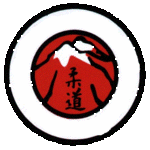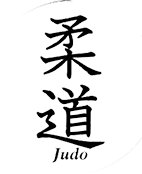What is the translation, judowise, of HISHIGI as in Ude-HISHIGI-Juji-Gatame?
5 posters
What does hishigi mean

mc_judo- Posts : 9
Join date : 2014-01-18
- Post n°2
 Re: What does hishigi mean
Re: What does hishigi mean
Hi Forum,
挫 in jisho.org: crush, break, sprain, discourage
I think judowise too
Rei
Michele
挫 in jisho.org: crush, break, sprain, discourage
I think judowise too
Rei
Michele

gester- Posts : 66
Join date : 2013-02-07
- Post n°3
 Re: What does hishigi mean
Re: What does hishigi mean
Thanks Michele.
Is it a word that really isn't used too often?
I asked a native speaker who is a judoka and he said he'd have to look it up.
Gester
Is it a word that really isn't used too often?
I asked a native speaker who is a judoka and he said he'd have to look it up.
Gester

NBK2- Posts : 28
Join date : 2019-04-10
- Post n°4
 Re: What does hishigi mean
Re: What does hishigi mean
Not used much in conversational Japanese.

finarashi- Posts : 507
Join date : 2013-01-11
Location : Finland
- Post n°5
 Re: What does hishigi mean
Re: What does hishigi mean
IMHO it has to do with the Judo naming convention which should have "principle" there. Especially in ne-waza the naming of holding techniques have varied over the time when e.g. kuzure-yoko-shiho-gatame has sometimes been on list and then not (it is not now).
http://kodokanjudoinstitute.org/en/waza/list/#a2-2
First let's think about a small tree branch or piece of wood. When you take it from both ends and bend it so it breaks then you do "hishigi". Having hishigi in arm locks means that Kodokan wants to emphasize the movement that is actually used to cause the pain.
I.e in Ude-hishigi-juji-gatame tori has uke's arm in between his legs, arm stretched and elbow towards the stomach. The lock is applied by bending the arm further i.e. hishigi. Note; one could also cause pain in the elbow by just rotating the arm around its axis (twisting). Not very effective way of doing it. One could also put left arm to uke's elbow and the using right arm (or leg) bend uke's arm back towards uke's chest. Because tori's left arm stays between uke's arm then elbow is separated. However this separation is not hishigi it can be classified as stretching type. Note that IMHO either "alternative" way of causing elbow pain is forbidden in Judo because of the danger of injury and should be penalized. If you tap though then you loose
It should be noted that Judo has a plethora of ne-waza techniques see e.g.
"Judo on the ground : Katamewaza - the Oda method : An interpretation of the Oda system comprising numerous drastic immobilizations, necklocks and dislocation methods hitherto unknown in the West" translated from Japan by Harrison, Ernest John (1873 - 1961), author Oda, Jōin (Tsunetani) (1882 - 1955), London, United Kingdom, W. Foulsham & Co., 1954, 199p.
which describes about 50 locks. Note though that Kodokan Judo has just the 10 named "principles". Note that under one principle several variations can occur.
http://kodokanjudoinstitute.org/en/waza/list/#a2-2
First let's think about a small tree branch or piece of wood. When you take it from both ends and bend it so it breaks then you do "hishigi". Having hishigi in arm locks means that Kodokan wants to emphasize the movement that is actually used to cause the pain.
I.e in Ude-hishigi-juji-gatame tori has uke's arm in between his legs, arm stretched and elbow towards the stomach. The lock is applied by bending the arm further i.e. hishigi. Note; one could also cause pain in the elbow by just rotating the arm around its axis (twisting). Not very effective way of doing it. One could also put left arm to uke's elbow and the using right arm (or leg) bend uke's arm back towards uke's chest. Because tori's left arm stays between uke's arm then elbow is separated. However this separation is not hishigi it can be classified as stretching type. Note that IMHO either "alternative" way of causing elbow pain is forbidden in Judo because of the danger of injury and should be penalized. If you tap though then you loose
It should be noted that Judo has a plethora of ne-waza techniques see e.g.
"Judo on the ground : Katamewaza - the Oda method : An interpretation of the Oda system comprising numerous drastic immobilizations, necklocks and dislocation methods hitherto unknown in the West" translated from Japan by Harrison, Ernest John (1873 - 1961), author Oda, Jōin (Tsunetani) (1882 - 1955), London, United Kingdom, W. Foulsham & Co., 1954, 199p.
which describes about 50 locks. Note though that Kodokan Judo has just the 10 named "principles". Note that under one principle several variations can occur.

gester- Posts : 66
Join date : 2013-02-07
- Post n°6
 Re: What does hishigi mean
Re: What does hishigi mean
Thanks, Farashi good info.
Im not familiar with the “10 principles of judo”.
Gester
Im not familiar with the “10 principles of judo”.
Gester

finarashi- Posts : 507
Join date : 2013-01-11
Location : Finland
- Post n°7
 Re: What does hishigi mean
Re: What does hishigi mean
Sorry if I confuse, but one thing that separates Judo from many other is the fact that Kodokan judo wants to name only principles not variations. So principle is something that is of higher order than variation. Principle is all techniques that are done useing the same overall p... (Ok you get me)
i. e. a throw done left or right does not have a different name. A throw done using one hand or left hand or right hand or .. has just one name, because throws are named using the principles of throw.
(Ok there are slight exceptions on this)
So we only have principle yoko shiho gatame i.e. all holds that are done to from the side no matter how your hands are and not left side yoko shiho gatame and right side yoko shiho gatame and ...
i. e. a throw done left or right does not have a different name. A throw done using one hand or left hand or right hand or .. has just one name, because throws are named using the principles of throw.
(Ok there are slight exceptions on this)
So we only have principle yoko shiho gatame i.e. all holds that are done to from the side no matter how your hands are and not left side yoko shiho gatame and right side yoko shiho gatame and ...

Fritz- Posts : 121
Join date : 2013-01-16
- Post n°8
 Re: What does hishigi mean
Re: What does hishigi mean
It seems so, about twenty years ago i asked my Japanese language teacher for that word and she consisted not to know it.gester wrote:Is it a word that really isn't used too often?
I asked a native speaker who is a judoka and he said he'd have to look it up.
finarashi likes this post

